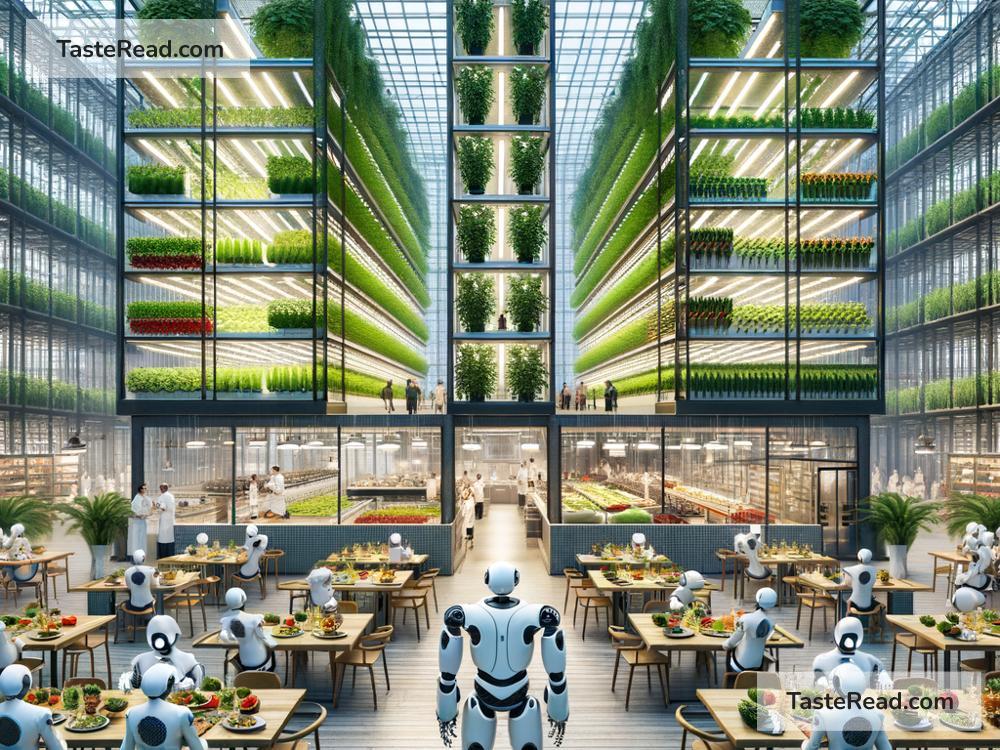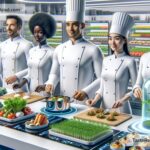The Future of Food: Building an Inclusive System Through Collaboration
Food is one of the most basic necessities for human survival. It connects people across cultures, traditions, and generations. But today, our food systems face serious challenges, such as climate change, population growth, food waste, and inequality in access to healthy meals. To overcome these challenges, we need bold ideas, collaborative action, and inclusivity in decision-making. In this blog post, we’ll explore the future of food and how systemic collaboration can lead to a fairer and more sustainable world.
What’s Happening to Our Food System?
The food system includes everything involved in growing, processing, transporting, and consuming food. Over the years, advances in technology and farming techniques have helped us produce more food than ever before. However, not everyone gets to benefit from this abundance. Nearly 800 million people worldwide still suffer from hunger, while over 1 billion people face health problems caused by unhealthy eating habits.
Meanwhile, climate change adds more stress to the system. Droughts, floods, and extreme weather make farming unpredictable, reducing crop yields and threatening the livelihoods of farmers. In addition, agriculture itself contributes to climate change due to deforestation, overuse of land, and high greenhouse gas emissions—especially from practices like raising livestock.
To address these problems, we need to rethink how food is produced, shared, and consumed. This won’t just require technological innovation; it will also demand cooperation, inclusivity, and the active involvement of all groups in society.
What Does the Future of Food Look Like?
The future of food will depend on bold solutions that promote sustainability, health, and inclusivity. Here are a few key trends shaping the road ahead:
-
Alternative Proteins: With concerns about the environmental impact of meat production, many people are turning to plant-based alternatives or lab-grown (cultured) meats. These protein sources require fewer resources and produce fewer emissions compared to traditional animal agriculture.
-
Precision Agriculture: Technology is transforming farming. Tools like drones, sensors, and artificial intelligence allow farmers to use resources efficiently and minimize waste. For example, precision irrigation ensures crops get just the right amount of water, reducing both waste and costs.
-
Regenerative Farming: Instead of depleting the land, regenerative farming practices aim to restore soil health, increase biodiversity, and capture carbon from the atmosphere. These methods benefit both the environment and farmers.
-
Food Waste Reduction: About one-third of all food produced globally is wasted each year. Innovations like better storage systems, apps connecting surplus food to those in need, and edible packaging are helping reduce food waste.
-
Local Food Systems: Over-reliance on global supply chains can create vulnerabilities during disruptions (like pandemics). Local food systems focus on producing and distributing food closer to home, supporting small farms and reducing the need for long transportation.
-
Personalized Nutrition: Advances in science may allow individuals to tailor their diets based on their genetics, health conditions, and lifestyle. This can lead to better overall health and reduce the risks of diet-related diseases.
Why Collaboration is Key
While these technological and scientific advances offer hope, they won’t work without proper collaboration. The food system is vast, connecting farmers, suppliers, retailers, policymakers, researchers, and consumers. Each group plays an important role, and none can solve food-related challenges on their own.
Systemic collaboration requires breaking down silos and creating partnerships across sectors. For example:
- Farmers can partner with scientists to adopt sustainable farming practices that protect the environment and improve yields.
- Governments can work with communities to ensure that food policies promote equity and access for all—including marginalized populations.
- Businesses can team up with nonprofits to reduce food waste and distribute surplus food to those in need.
- Consumers can join advocacy groups to push for healthier, more sustainable food choices in their local supermarkets.
Collaboration also allows for a diversity of perspectives. Farmers, Indigenous communities, scientists, and urban planners all have unique knowledge and experiences to share. By including these voices, we can design solutions that work for a wide range of people.
The Role of Inclusivity
For a truly sustainable and fair future of food, inclusivity is essential. This means involving communities that have historically been left out of decision-making processes, such as small-scale farmers, Indigenous people, women, and low-income families. These groups often bear the brunt of food system challenges, such as land degradation or unaffordable prices for healthy food.
Inclusive collaboration ensures that everyone has a seat at the table when shaping food policies. It also helps foster trust and create innovative solutions that are practical for those who need them most. For example, Indigenous farming practices often emphasize harmony with nature and could inspire solutions to tackle climate change.
What Can We Do?
The future of food isn’t just up to scientists or policymakers—it’s something everyone can be a part of. Here’s what you can do:
-
Support Local Farmers: Buy from farmers’ markets or join community-supported agriculture programs. This helps your local economy and reduces the environmental impact of food transportation.
-
Reduce Food Waste: Plan your meals, store food properly, and get creative with leftovers to minimize waste.
-
Choose Sustainable Options: Look for food products that are ethically sourced, reduce packaging waste, or focus on environmentally friendly practices.
-
Engage in Conversations: Talk to others about food-related challenges and solutions. Join community initiatives that promote food equity and sustainability.
Conclusion
The future of food offers both challenges and opportunities. By embracing innovations, fostering collaboration, and prioritizing inclusivity, we can create a food system that benefits both people and the planet. There’s no single solution—but by working together, we can help ensure that everyone has access to nutritious, affordable, and sustainable food for generations to come.


